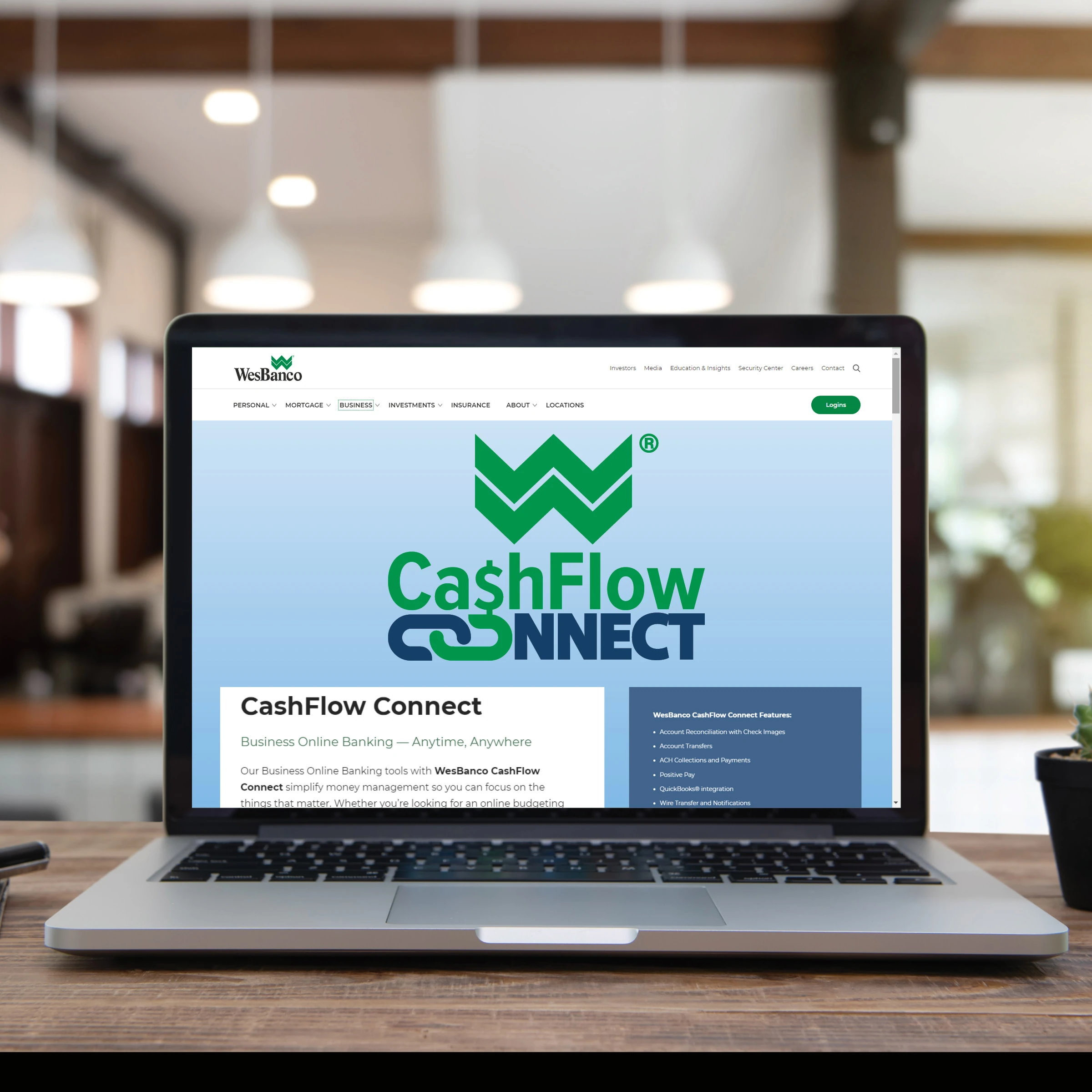NOTICE: Internet Explorer was retired by Microsoft on June 15th, 2022 and is no longer supported. This could change how you access Online Banking.
Maximizing Sales: A Guide to Credit Card Processing

They used to say that “cash is king,” but these days, most shoppers prefer to pay by card.
In this increasingly paperless world, enabling credit and debit card payments can enhance customer experience, boost sales volume, accelerate cash flow, and reduce transaction costs. But not all merchant solutions are created equal, so ensure that you understand the process and compare all your options.
In this article, we’ll share four basic considerations for setting up a card processing system that aligns with your small business’s needs and goals:
1. Know How Card Processing Works
You know how card payments work from the customer’s perspective: swipe, sign, and go. But for a merchant, it can be a little more complex. Here are the typical steps:
• Initiation: Your customer swipes, taps, dips, or clicks to initiate a payment.
• Processing: Your payment gateway – which can be a physical terminal or an online portal – captures your customer’s card information and sets off a rapid-fire series of messages between your financial institution (acquirer), the company that handles your card transactions (processor), the network (e.g., Visa, Mastercard), and your customer’s financial institution (issuer).
• Authorization: Once the transaction has been approved, you complete the sale.
• Settlement: At closing time, you may perform a batch settlement by submitting all of the day’s transactions to your acquirer (or this step may be automated).
• Funding: Once your acquirer has received funds from the issuer, the money is deposited into your merchant or payment service provider (PSP) account.
• Transfer: Funds are transferred into your business checking account (either manually or based on a set payout schedule).
At one or more points in this process, you’ll incur transaction fees, including processing fees (paid to your processor) and interchange fees (paid to issuers).
2. Decide How You’ll Accept Payments
There are several ways to accept credit and debit card payments. Here are the most common options:
• Online: If you do most of your business over the Internet, you’ll need an online portal so customers can securely enter their card info and get emailed receipts. Many online processors offer tools for building an online store or will integrate with your current e-commerce platform. These portals make online shopping a snap but can be cumbersome for in-person transactions.
• In-store: If you’re a brick-and-mortar retailer or service provider, you’ll probably want a physical point-of-sale (POS) terminal or possibly multiple handheld terminals to serve multiple customers at once. These tend to be robust and efficient systems, but they tie you to a specific location.
• Over the phone: Most physical terminals allow card-not-present (CNP) transactions, but they often trigger an extra fee. So, if you routinely take orders from customers over the phone or by mail, you may benefit from a virtual terminal, which allows you to manually enter card information into a secure web or software interface. While similar to online portals, these platforms aren’t designed to be customer-facing, so if you want to provide self-serve payment options, this might not be the best choice.
• Using a mobile card reader: This may be an appealing option if your business involves a lot of popups, house calls, or trade shows. Some systems allow you to turn your smartphone or tablet into a register by downloading an app and plugging a card reader into the charging port. Others use small standalone readers that wirelessly connect to your device. These can be used in traditional retail settings, too, but bear in mind that it will tie up your device and depend on your Wi-Fi or cellular signal.
Whatever card acceptance method (or methods) you choose, you should be able to integrate your sales data with accounting software, inventory management systems, and other digital tools.
3. Choose a Pricing Model
Once you’ve decided how you’ll accept credit and debit card payments, you’ll want to select a pricing model that makes sense for your business:
• Interchange plus: With every purchase, you’ll pay an interchange fee (which varies by network and card type) plus an additional fee to the processor. This model offers the most pricing transparency per transaction, and if your business has a high sales volume (like a busy specialty retail store), it may be the most cost-effective option.
• Flat rate: With every purchase, you’ll pay a single fee covering interchange and processing fees. This model is the most straightforward, making budgeting easy, and rates can be competitive if your business has low to moderate transaction volumes (like a professional services firm).
• Subscription: Also known as membership pricing, this model charges you a set amount per month instead of all or a portion of the usual per-transaction fees. This model can deliver significant savings if your business has high volumes and transaction amounts (like a wholesale distributor) that would otherwise incur hefty processing fees.
Beyond the basic pricing model, you should find out if there are additional costs (like batch fees or monthly minimums) and consider variables like contract length and system scalability that could affect your operational costs.
4. Opt for a Merchant Account or a PSP
Traditionally, to accept cards, you needed a merchant account. That’s no longer true, although selecting a processor that uses merchant accounts is still the best strategy for many enterprises:
• Merchant accounts are specialized accounts for processing debit and credit card payments. Having a dedicated account can give you more control over the payment process, like the ability to customize your checkout experience, tailor terms and conditions, and implement specialized compliance and fraud protection measures. You may also be able to negotiate more favorable rates and terms with higher transaction volumes. However, the initial setup can be more costly and time-consuming.
• PSPs allow you to start accepting card payments without opening a separate merchant account. Instead, your processor takes on the role of collecting funds and transferring them to your regular bank account. It’s usually easier for small businesses and solopreneurs to set up, and the fee structure can be competitive for lower transaction volumes. However, you may need a more tailored merchant account solution as your business scales and evolves.
Charge Ahead
To learn more about merchant solutions that can help you streamline your point-of-sale process, contact a WesBanco Treasury Management Officer.
Content is for informational purposes only and is not intended to provide legal or financial advice. The views and opinions expressed do not necessarily represent the views and opinions of WesBanco.
While we hope you find this content useful, it is only intended to serve as a starting point. Your next step is to speak with a qualified, licensed professional who can provide advice tailored to your individual circumstances. Nothing in this article, nor in any associated resources, should be construed as financial or legal advice. Furthermore, while we have made good faith efforts to ensure that the information presented was correct as of the date the content was prepared, we are unable to guarantee that it remains accurate today.
Neither Strategy Academy nor its sponsoring partners make any warranties or representations as to the accuracy, applicability, completeness, or suitability for any particular purpose of the information contained herein. Strategy Academy and its sponsoring partners expressly disclaim any liability arising from the use or misuse of these materials and, by visiting this site, you agree to release Strategy Academy and its sponsoring partners from any such liability. Do not rely upon the information provided in this content when making decisions regarding financial or legal matters without first consulting with a qualified, licensed professional.
WesBanco Online Banking Demos
Walk through our digital banking experience to learn more about WesBanco's Business CashFlow Connect online banking tools.
Get Started



